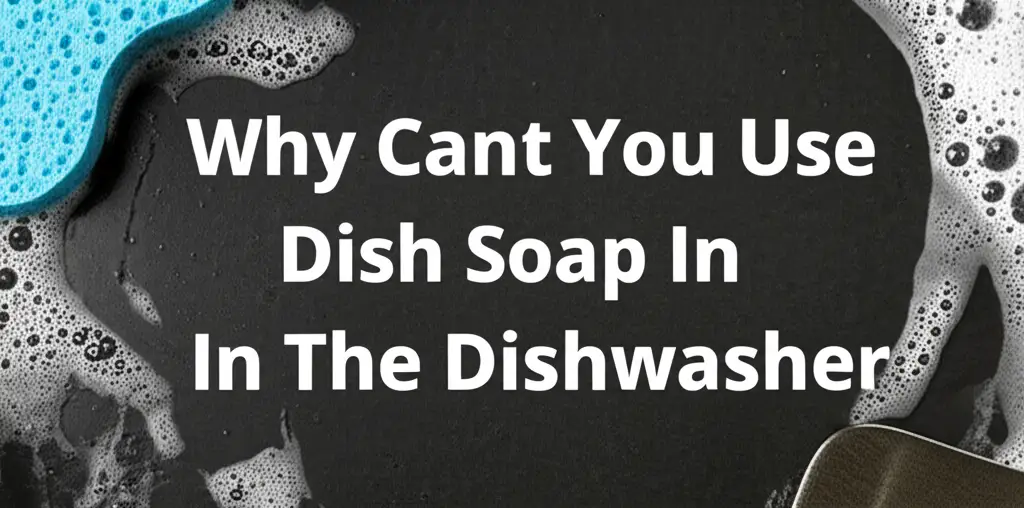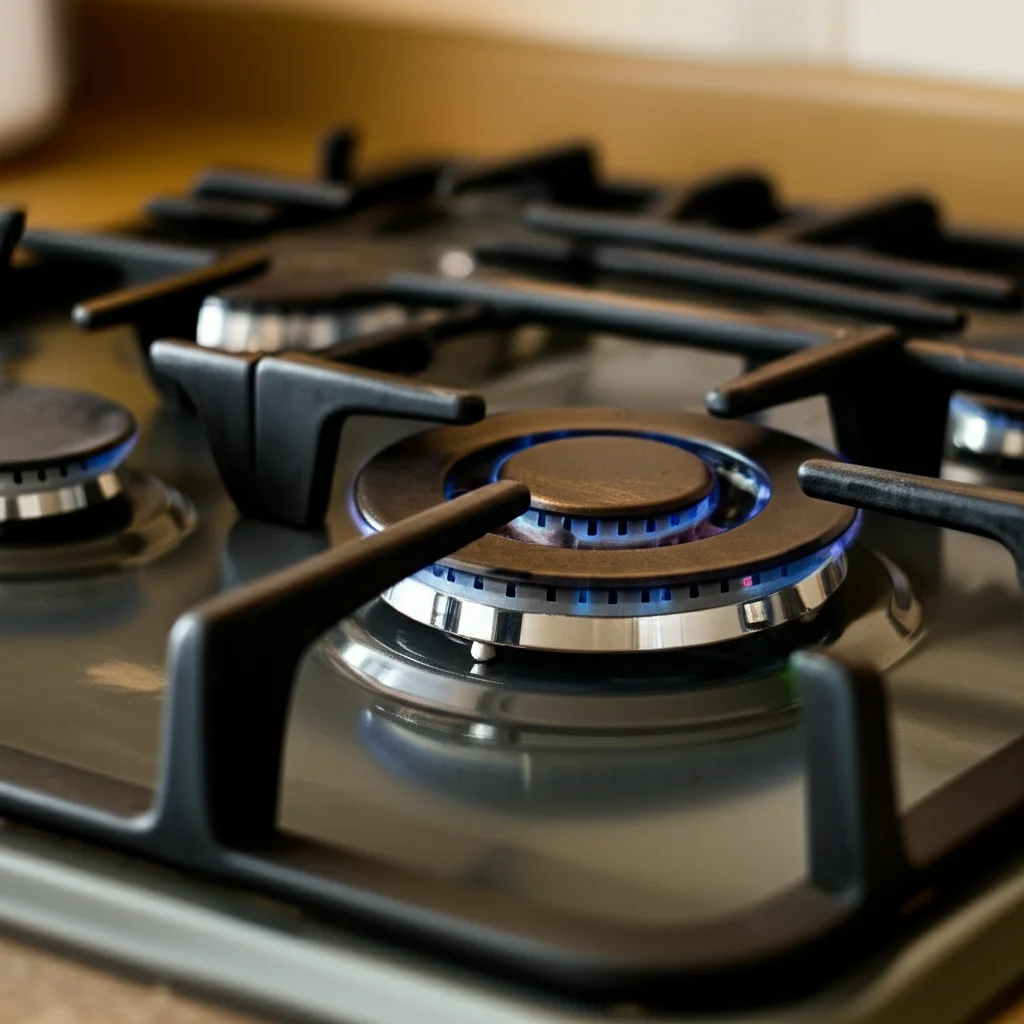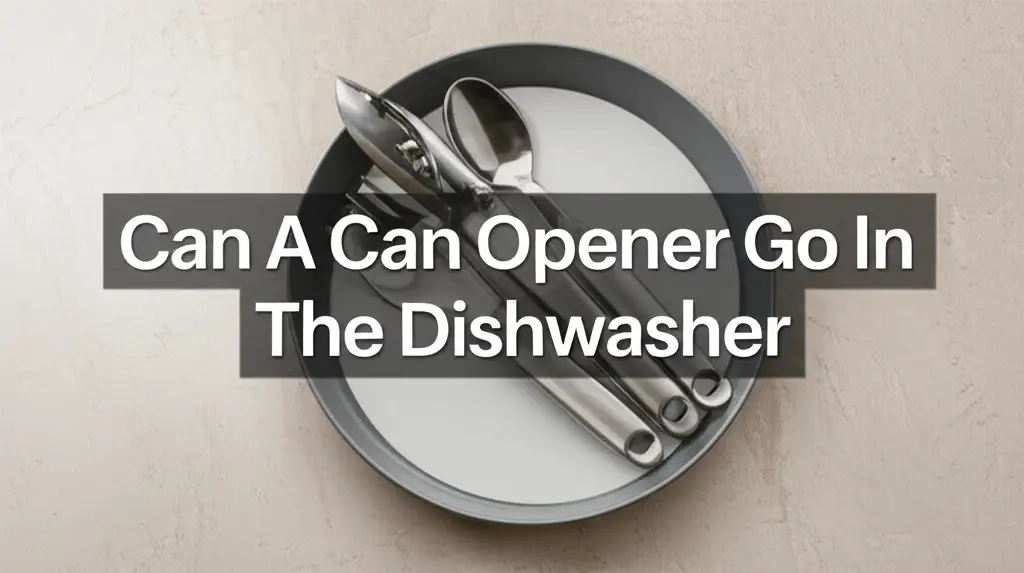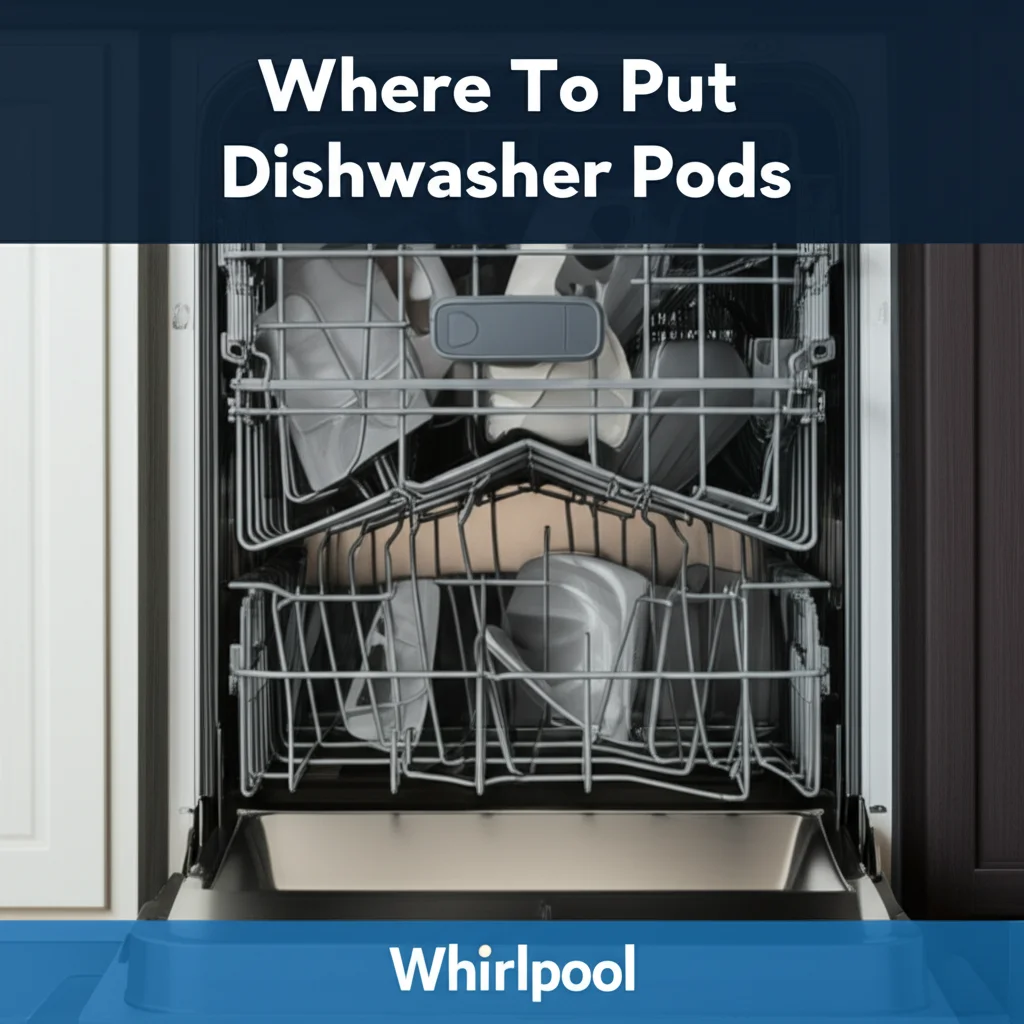· Todd Martin · Kitchen & Home Appliances · 13 min read
How To Use Liquid Dish Soap In Dishwasher
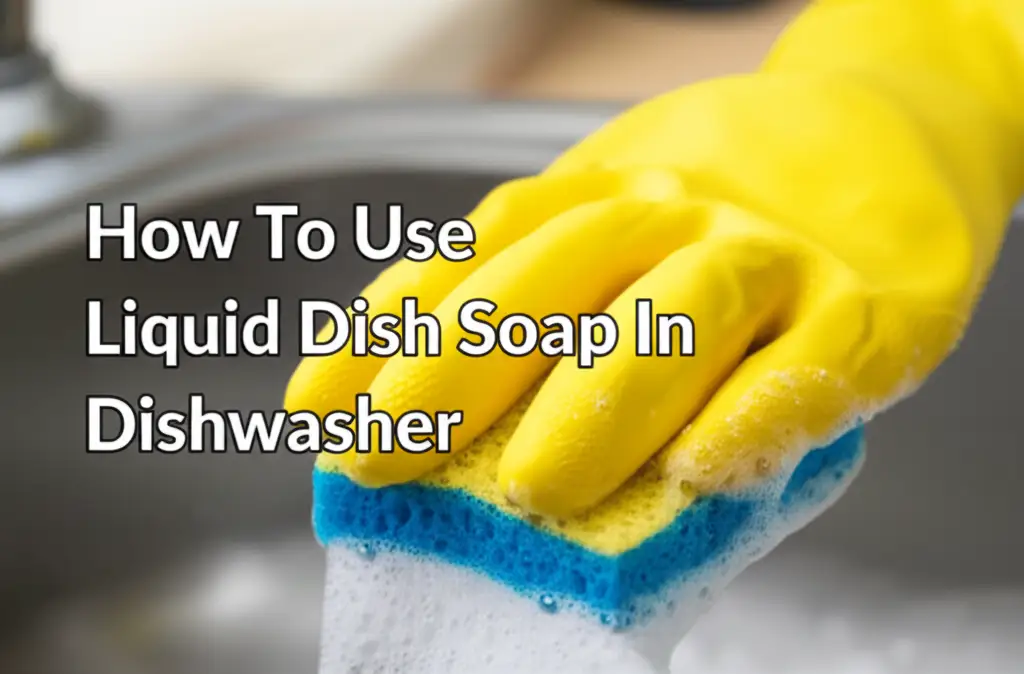
Using Liquid Dish Soap in Your Dishwasher: A Practical Guide
Imagine loading your dishwasher, adding what you think is soap, and then a mountain of suds erupts from the machine. This common household mishap happens when someone tries to use liquid dish soap in a dishwasher. I know many of us have been there, facing a soapy flood. This guide will walk you through why this happens and what steps you can take if you accidentally make this mistake. We will explore the crucial differences between hand dish soap and machine detergent. My goal is to help you understand how to avoid this soapy disaster in the future.
Takeaway
- Never use liquid dish soap designed for hand washing in an automatic dishwasher.
- Hand dish soap creates excessive suds that cause overflows and can damage your appliance.
- If an overflow occurs, immediately stop the dishwasher and clean up the suds.
- Run multiple rinse cycles to remove all soap residue from the dishwasher.
- Always use detergents specifically formulated for automatic dishwashers.
The Clear Answer
You should not use liquid dish soap in a dishwasher. Dishwasher detergents are low-sudsing and formulated for machine use. Liquid hand dish soap creates excessive foam, leading to overflows, potential appliance damage, and messy cleanups. Only use products clearly marked for automatic dishwashers.
The Perils of Putting Liquid Dish Soap in Your Dishwasher
Many people wonder if they can use liquid dish soap in their dishwasher. My direct answer is a firm no. This common mistake causes significant problems in your kitchen. Hand dish soap produces a lot of foam, which is exactly what you do not want in your appliance. I have seen the results, and they are usually a bubbly, overflowing mess.
The main issue is the sheer volume of suds. Standard liquid dish soap, like Dawn or Palmolive, has powerful foaming agents. These agents are great for cleaning dishes by hand in a sink full of water. However, a dishwasher operates differently. It uses jets of water to spray dishes, not a basin for sudsing. When these jets hit the high-foaming soap, it creates an enormous amount of lather. This lather quickly fills the entire machine cavity.
Once the suds multiply, they seek any available escape route. They push past the door seal, pouring onto your kitchen floor. The foam can also enter the dishwasher’s internal components. This includes the motor, pump, and electrical parts. Such an event can cause serious damage to your appliance. It also creates a slip hazard on your kitchen floor. I always advise against this shortcut, even if you are out of regular dishwasher detergent. Remember, a little suds is good for hand washing, but it is a big problem for your machine. You can read more about why this happens in detail by understanding why can’t you use dish soap in the dishwasher.
Why Liquid Dish Soap and Dishwashers Don’t Mix: The Science
Understanding the fundamental difference between hand dish soap and dishwasher detergent is crucial. They both clean, but their chemical compositions are very distinct. Hand dish soap contains strong surfactants that create abundant foam. This foam traps grease and food particles, lifting them from your dishes during manual scrubbing. It is designed to be visible and tactile, giving you the sensation of clean.
Dishwasher detergent works differently. It uses a blend of chemicals optimized for an enclosed machine environment. These detergents contain enzymes, bleaches, and water softening agents. Crucially, they are formulated to be low-foaming. This means they effectively clean without creating a suds explosion. The cleaning action comes from powerful chemical reactions and water pressure, not from foam.
If you consider using even a small amount of liquid dish soap, think about its impact. Even a tiny drop of hand soap can produce a surprising amount of suds in a dishwasher cycle. This is because dishwashers continuously recirculate water. Each pass of water through the sudsy mixture generates more foam. It is a self-perpetuating problem. This cycle quickly overwhelms the machine’s capacity to contain the suds. The difference in formulation is the key reason these two products are not interchangeable. You might wonder how much dish soap can I use in the dishwasher, but the answer remains zero.
What Happens If You Accidentally Use Hand Soap in Your Dishwasher
I have heard many stories, and perhaps you have one too, about the moment the suds began to rise. Accidentally using hand soap in your dishwasher starts quietly, then quickly becomes chaotic. When the wash cycle begins, the hot water and powerful jets immediately activate the foaming agents in the liquid dish soap. This creates a small amount of suds at first. However, the continuous churning and spraying of water rapidly increase the foam.
Within minutes, the suds begin to build up inside the dishwasher. They will fill the entire interior, from the bottom rack to the top. As the foam expands, it starts to push against the dishwasher door seal. Eventually, the pressure becomes too great, and the suds will begin to leak out. This usually happens around the bottom of the door. The foam quickly spreads across your kitchen floor. It can seep under cabinets and even damage flooring.
Beyond the messy cleanup, there is also the risk of internal damage to the appliance. The suds can get into the dishwasher’s motor, pump, and electrical wiring. This can lead to short circuits or motor burnout. I always stress the importance of immediate action. The sooner you stop the cycle, the less suds will escape, and the less potential damage will occur. Understanding can I use normal dish soap in the dishwasher further reinforces these dangers.
Stopping the Suds: Immediate Steps for a Dish Soap Overflow
Discovering a sudsy overflow is a moment of panic for most people. My first advice is to remain calm and act quickly. Your immediate goal is to stop the dishwasher and prevent more suds from escaping. This rapid response will minimize the mess and potential damage to your home. I want to guide you through the essential steps to handle this situation.
First, open the dishwasher door just enough to reach the control panel. Hit the “Cancel” or “Off” button immediately. This will stop the wash cycle and the water circulation. Do not open the door all the way at this point. Opening it wide will cause a flood of suds to rush out. You need to give the suds a moment to settle slightly.
Next, you need to assess the situation and prepare for cleanup. Grab a large towel or several old rags. Place these absorbent materials around the base of the dishwasher. This will help contain any additional suds that might overflow when you fully open the door. Be careful as the floor might already be slippery. I always keep old towels specifically for household spills for this reason. For more detailed troubleshooting, you can refer to our guide on how to fix putting dish soap in the dishwasher.
Once you have absorbed the initial overflow, slowly open the dishwasher door completely. The remaining suds inside will likely still be abundant. Use a large scoop or a cup to carefully remove as much of the suds as possible. Ladle them into a bucket or directly into your sink. Avoid simply draining the dishwasher with all the suds present. This can overwhelm your drain pipes and lead to clogs or even more foam in your plumbing. I recommend this careful manual removal to prevent further issues.
Cleaning Up and Restoring Your Dishwasher After a Soap Incident
After you have stopped the suds and removed the bulk of the foam, your work is not over. The dishwasher still has soap residue inside. This residue needs to be completely flushed out before you can use the appliance normally again. My method ensures your dishwasher returns to its proper working order without lingering issues. I prioritize thoroughness to protect your machine.
First, inspect the dishwasher interior. Look for any visible soap residue on the racks, walls, and sprayer arms. Wipe down these surfaces with a clean, damp cloth. You want to remove as much physical soap as possible before running any cycles. This initial wipe-down helps reduce the amount of suds generated in the next steps. I often find a surprising amount of sticky film.
Next, you need to run several rinse cycles. Fill the detergent dispenser with a small amount of white vinegar, or pour about half a cup into the bottom of the dishwasher. Vinegar helps break down the soap suds and eliminate residue. Run a short rinse cycle. Do not add any new detergent. After the cycle finishes, check for suds. If you still see foam, repeat the vinegar rinse cycle. You might need to do this two or three times. My experience shows that patience here prevents future problems.
Once no suds appear during a rinse cycle, your dishwasher should be free of liquid dish soap. Before using it for dishes, I suggest running one final empty cycle with a small amount of regular dishwasher detergent. This final cycle ensures everything is clean and ready. It also helps to re-prime the detergent dispenser. This careful process ensures your dishwasher is clean, safe, and ready for proper use. It is different from what you use in a washing machine, for example. You cannot use dish soap in washing machine either for similar reasons.
Identifying the Right Detergent: What to Use Instead of Hand Soap
Now that we understand the problems with using liquid dish soap, let’s talk about the correct products. Choosing the right detergent for your dishwasher is simple but critical. You need to look for products specifically labeled for “automatic dishwashers.” These formulations are designed to work safely and effectively with your appliance. I always double-check the label myself.
There are several forms of dishwasher detergent available. Each type offers its own benefits and convenience. You can find powders, gels, and pods or tablets. Powders are often the most economical choice. They allow you to adjust the amount of detergent based on your load size and water hardness. However, they can clump if exposed to moisture. Gels are convenient and dissolve easily, but some argue they are less effective at cleaning than powders or pods. I find gels useful for lighter loads.
Pods or tablets are probably the most popular choice today. They contain pre-measured amounts of detergent, often with rinse aid and other cleaning boosters. This makes them incredibly convenient; you just toss one in. They eliminate guesswork and mess. Regardless of the form, ensure the packaging clearly states it is for automatic dishwashers. Never confuse it with hand dishwashing liquid. Knowing how to use dishwasher properly also involves selecting the correct detergent. For instance, can you use dishwasher liquid in dishwasher is a common query, and the answer is yes, as long as it’s formulated for dishwashers, not hand washing.
Beyond the main detergent, consider using a rinse aid. Rinse aid helps water sheet off dishes, preventing spots and streaks. This is especially helpful if you have hard water. You add rinse aid to a separate dispenser in your dishwasher. It makes a noticeable difference in the dryness and shine of your dishes. Using the right detergent and rinse aid ensures clean dishes and a happy appliance.
Preventing Future Mistakes: Smart Habits for Dishwasher Use
Avoiding future dish soap incidents is easier than you think. It requires establishing a few smart habits in your kitchen. My advice focuses on clear organization and good communication within your household. These simple steps can prevent many common cleaning mishaps. I believe prevention is always better than cleanup.
First, store your dishwasher detergent and liquid hand dish soap in separate, clearly designated locations. Do not keep them right next to each other. For example, keep the dishwasher detergent near the dishwasher itself. Store hand dish soap under the sink or by the kitchen faucet. This physical separation reduces the chance of grabbing the wrong bottle by mistake. I use different types of containers for easy identification.
Second, ensure all household members know the difference. Educate your family, especially children or new helpers, about which product goes where. Explain why using the wrong soap is a big problem. Show them the correct detergent and where to find it. Make it a simple rule: “Only the dishwasher pod goes in the dishwasher.” I find a quick demonstration helpful.
Third, always check the label before adding any product to your dishwasher. This might seem obvious, but rushing through chores can lead to errors. Take an extra second to read the product name and instructions. This quick check takes minimal time but saves a lot of hassle. I make it a habit every time I load the machine.
Finally, consider buying dishwasher detergent in a distinct package. Some liquid hand soaps and dishwasher gels look very similar. Opt for pods or tablets that have unique packaging. This visual difference can serve as an extra reminder. By implementing these simple organizational and educational strategies, you can confidently use your dishwasher without worrying about a soapy flood.
FAQ Section
Can I use just a tiny bit of dish soap in my dishwasher?
No, even a tiny amount of liquid dish soap can cause significant problems. Dishwashers recirculate water, and even a single drop of hand soap will create an abundance of suds. This will lead to an overflow and potential damage. Always use proper dishwasher detergent.
Is it okay to use liquid laundry detergent in a dishwasher?
Absolutely not. Liquid laundry detergent is formulated for washing clothes and creates excessive foam, similar to hand dish soap. It will cause severe sudsing and overflow in a dishwasher. Only use detergents designed for dishwashers.
How do I know if I’ve used the wrong soap in my dishwasher?
The most obvious sign is an excessive amount of suds overflowing from the dishwasher door. You might also notice a soapy film or residue on your dishes after the cycle completes. Strong soap smells are also a clear indicator.
Will using dish soap damage my dishwasher permanently?
Using dish soap can cause serious damage, but it’s not always permanent. The suds can ruin the motor or pump, short-circuit electrical components, or clog drain lines. Prompt action and thorough cleanup can often prevent lasting harm.
What is the difference between dish soap and dishwasher detergent?
Dish soap (for hand washing) contains powerful foaming agents that create abundant suds. Dishwasher detergent (for machines) is specifically formulated to be low-sudsing and includes enzymes, bleaches, and other chemicals that clean without producing foam in a closed system.
Can I use natural liquid dish soap in my dishwasher?
No, “natural” liquid dish soap still contains foaming agents designed for hand washing. It will produce excessive suds in a dishwasher, just like conventional liquid dish soap. Always use a natural dishwasher detergent specifically made for machines.
Conclusion
Using liquid dish soap in your dishwasher is a common mistake with messy consequences. I have learned that hand dish soap and machine detergents serve different purposes due to their distinct chemical compositions. Hand soap creates an overflow of suds that can spill onto your floor and potentially damage your appliance’s internal parts. Understanding these differences helps prevent costly cleanups and repairs.
If you ever find yourself in a sudsy situation, remember to act quickly. Stop the cycle, scoop out the suds, and run several rinse cycles with white vinegar. This process helps remove all the soap residue. Always keep proper dishwasher detergent on hand, whether it’s powder, gel, or convenient pods. Store your cleaning products wisely to avoid future confusion. By following these simple guidelines, you will keep your kitchen clean and your dishwasher running smoothly. My main message is clear: stick to designated dishwasher detergents for optimal performance and safety.


